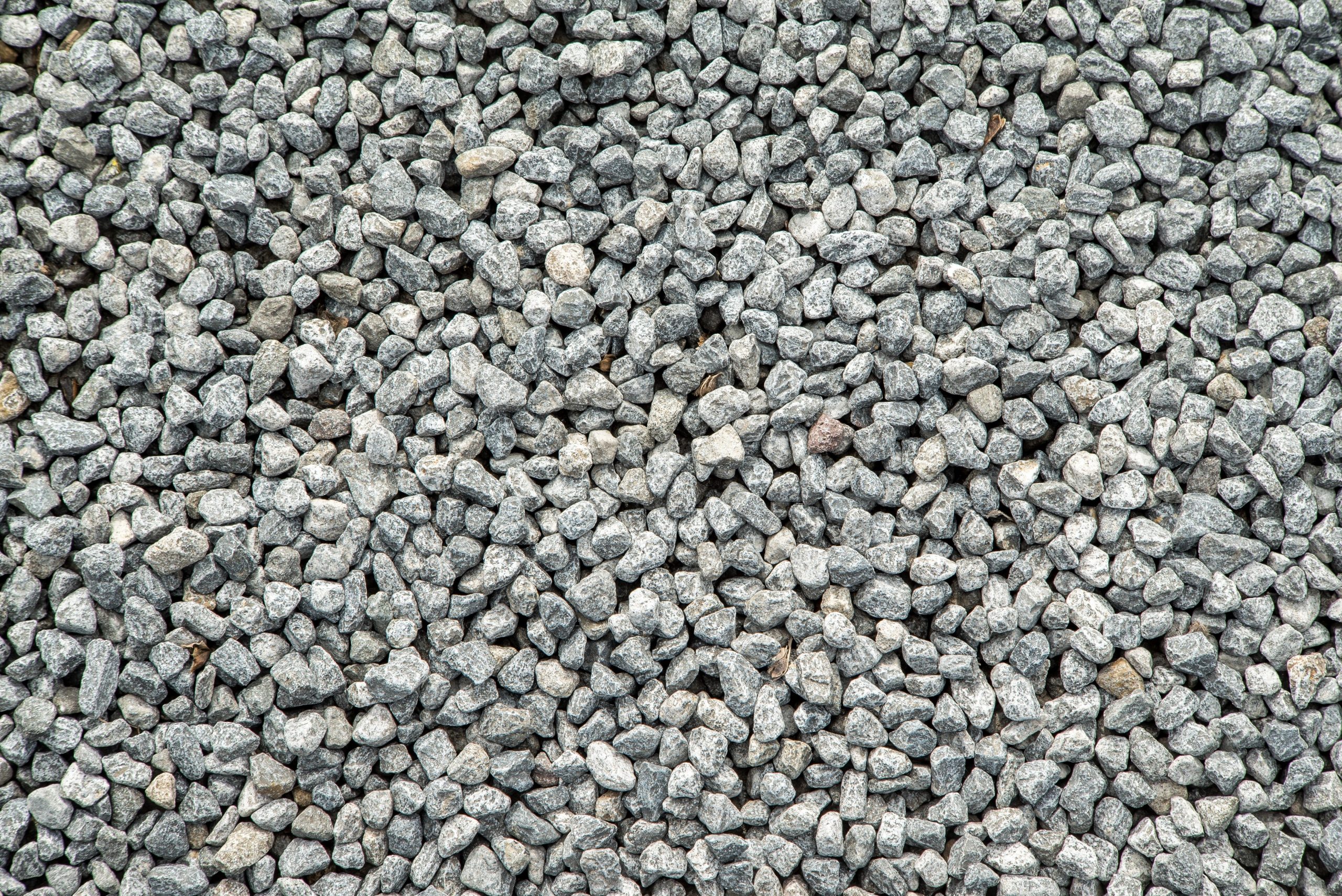As a branch of civil engineering, soil mechanics studies the behavior of soil under a variety of environmental conditions. Understanding soil mechanics is vital for ensuring structure stability and safety, from towering skyscrapers to expansive bridges. One of the key aspects of this field is soil consolidation testing. A process that measures how soil compresses and settles over time under a particular load using an automatic computerized oedometer. This testing is not only fundamental for predicting soil behavior under structural loads but also crucial for planning and executing construction projects efficiently and safely.
In soil consolidation testing, engineers assess how soil reacts when subjected to pressure changes, a scenario commonly encountered in real-world construction. Soil consolidation rate and extent directly influence building, infrastructure design and longevity. These tests help engineers determine vital soil characteristics, such as permeability, compressibility and shear strength. They are essential for making informed decisions about foundation design, load-bearing capacities, and overall construction safety.
NextGen’s Automatic Computerized Oedometer is an advanced instrument designed to transform the soil consolidation testing process. It automates a labor-intensive and time-consuming process that is traditionally associated with soil testing. Its precise control and data collection capabilities allow the Automatic Computerized Oedometer to perform soil consolidation tests in a more efficient, accurate, and reliable manner. Providing critical insights into soil behavior, it contributes to safer and more sustainable construction practices. It is an important tool in the arsenal of modern geotechnical engineering.
Exploring the capabilities and advantages of this innovative instrument, it becomes clear just how integral it is to the advancement of soil mechanics and the broader field of geotechnical engineering.
The Importance of Soil Testing in Modern Engineering
To understand the broader context and applications of the Automatic Computerized Oedometer, we must first understand the broader context and applications of this instrument in the field of soil mechanics.

Soil mechanics analyzes soil behavior under a variety of environmental conditions. Structures such as skyscrapers and bridges require this knowledge for stability and safety reasons. Soil consolidation testing is one of the key procedures in this field, which measures how soil compresses and settles under load over time. Hence, soil behaviour can be predicted under structural loads, guiding construction projects toward efficiency and safety.
A thorough evaluation of the response of soil to pressure changes is performed during soil consolidation testing. In the construction industry, consolidation rates and extents have a significant impact on the design of buildings and infrastructure. Engineers can make informed decisions regarding foundation design and load-bearing capacities by understanding key soil characteristics such as permeability, compressibility, and shear strength.
Agricultural, Engineering, and Other Applications of Soil Testing
While being essential for construction and engineering projects, soil testing also has a significant impact on many other sectors such as:
-
Agriculture: Soil testing is necessary for determining soil fertility, which influences crop health and yield. In addition to assessing the level of nutrients in the soil and the pH content, it guides the application of fertilizers in order to maximize crop production and enhance soil fertility.
-
Construction: In construction, soil testing is used to determine the soil’s bearing capacity, essential for designing foundations and other structures. Buildings, bridges, towers, and walls benefit from its structural integrity and long-term durability.
-
Pottery: The quality of soil, particularly clay soil, is crucial to the production of pottery. It is necessary to test the soil for impurities and to determine the appropriate moisture level in order to create pottery items.
-
Medicine: Before soil can be used in drug production, it must be tested for hazardous elements and contamination. Soil plays an important role in the development of antibiotics and other medicinal products.
-
Cosmetics: Soil testing ensures that soil-based ingredients used in cosmetics, such as clay, are not contaminated and comply with safety standards.
-
Environmental Engineering: Soil testing is crucial for the identification of soil contamination, which can negatively affect human health and the environment. In order to plan remediation strategies and comply with environmental regulations, this type of testing is essential.
Introduction to the Automatic Computerized Oedometer
NextGen’s Automatic Computerized Oedometer, also known as the ACE, is one of the most advanced tools for testing soil consolidation. Using this innovative instrument, the rate and magnitude of soil consolidation can be determined automatically. By applying successive increments of vertical load to soil specimens, laterally restrained, you can measure the response of soil specimens. ACE facilitates both load (stress) and swelling (strain) testing modes, ensuring practical, accurate, and reliable testing results.

Compact in design, the ACE houses two coaxial pneumatic cylinders that can handle different loads, with an automatic switching mechanism between low and high loads. An accurate load control system is implemented by a high-precision pneumatic servo-valve. There are two analog channels, one for the displacement transducer and the other for the load cell, which are both equipped with closed-loop feedback control. Test completion can be programmed according to a specific time frame or by following a specific procedure.
With ACE software, operators are able to predefine test parameters, and the system can record and display test results in real time on a PC. Furthermore, it is capable of automatically performing calculations, with the data being processed in accordance with Geo-Analysis Templates that comply with BS or ASTM standards.
It is noteworthy that the ACE’s frame is compatible with all standard consolidation cells ranging in diameter from 50.47 mm to 112.80 mm. Combining its flexibility with its capability to control up to 60 ACE units from a single PC, it is an essential piece of equipment for a fully automated Consolidation, Shear, Triaxial (CST) soil mechanics laboratory. There are, however, a few things to keep in mind. Consolidation cells, Geo-Analysis templates, test software, and a PC are not included with the frame.
Moreover, the NextGen Automatic Computerized Oedometer is designed to meet a wide range of international standards, making it applicable and relevant to a number of global contexts. Due to its compliance with standards such as BS or ASTM, it is versatile and suitable for a broad range of soil mechanics applications. The following section will discuss the specific features and capabilities of this cutting-edge instrument, highlighting how it has transformed soil testing across a number of different industries.
Oedometer’s Compliance with International Standards

Our Automatic Computerized Oedometer is designed to comply with a wide range of international standards. These standards are fundamental to the precise and consistent measurement of soil properties across different applications. Following is a list of how each standard contributes to its broad applicability and effectiveness:
-
BS 1377:5: The purpose of this part of the BS 1377 series is to determine the consolidation properties of soils. A set of standardized procedures is provided for conducting oedometer tests, including the use of equipment and sample preparation, the execution of the test, and the interpretation of data. Under a variety of loading conditions, this standard is critical for assessing the compressibility and consolidation rate of soils.
-
ASTM D2435: This standard specifies the methods for one-dimensional consolidation testing of soils. Specifically, it provides guidelines for determining the consolidation characteristics of cohesive soils that have been incrementally loaded. This standard includes detailed instructions on specimen preparation, testing procedures, and calculating consolidation parameters.
-
ASTM D3877: Describes how to determine the one-dimensional swelling or collapse behavior of soils. This is essential for understanding the expansion or shrinkage potential of soils, especially when moisture content changes. In varying environmental conditions, the test methods outlined in this article can be used to determine the stability and settlement characteristics of soils.
-
ASTM D4546: This standard specifies methods for conducting one-dimensional swell or collapse tests on soils. There are procedures for both constant-load and incremental-load tests included in the manual. In many geotechnical engineering applications, it is essential to understand the volume change behavior of soils.
-
AASHTO T216: AASHTO T216 focuses on the one-dimensional consolidation testing of soils, particularly for highway and transportation applications. Under controlled loading, it specifies methods for determining the rate and magnitude of soil consolidation.
-
NF P94-090-1: This standard describes the procedures for oedometer testing, with particular emphasis on the measurement of soil compressibility and consolidation rate. As well as specifying the requirements for equipment, it specifies how to conduct the test and how to analyze the data.
-
NF P94-091: It provides guidelines for soil consolidation tests, with particular emphasis on oedometer testing. It describes the procedures for preparing samples, performing tests, and interpreting results, thereby ensuring standardized measurements of soil consolidation properties.
-
UNE 103-405: The UNE 103-405 standardizes the methodology for soil consolidation tests. Detailed guidelines are provided for the use of equipment, sample preparation, test procedures, and data analysis in order to ensure the accuracy and reliability of the soil behaviour assessment.
-
UNE 103-602: Describes the methods and procedures for testing soil consolidation. A comprehensive guide is provided in order to ensure that the characteristics of soil consolidation are accurately determined through oedometer tests.
Main Features of the Automatic Computerized Oedometer
Providing exceptional accuracy and efficiency in soil consolidation and swell tests, the Automatic Computerized Oedometer offers a number of advanced features that make it a standout among soil testing instruments. This device is primarily composed of a PC-controlled automation system that facilitates the automated execution of tests. Having this feature ensures a high degree of precision and consistency, which is critical to determining the reliability of soil analysis.

Due to its complex pneumatic system, the Oedometer can handle a broad range of tests. This device is capable of performing both incremental consolidation and one-dimensional swell tests, providing a comprehensive analysis of soil properties under a variety of conditions. A key factor determining its versatility is the fact that it is applicable to a variety of soil mechanics applications.
In addition to its ability to conduct extended tests without interruption, the Oedometer features a number of other notable features. The machine can operate continuously, 24 hours a day, seven days a week, which increases test throughput while reducing operational costs. In extensive soil testing projects, where time efficiency is just as important as accuracy, this continuous testing feature makes it an invaluable tool.
Oedometer has been designed with error reduction in mind, addressing common challenges such as operator error and calibration discrepancies. The elimination of these environmental and human factors enhances the overall quality of soil analysis by ensuring more reliable and accurate test results.
Considering the capacity and precision of the Oedometer, it can be used for many types of testing applications. With a maximum capacity of 15 kN and a travel displacement transducer of 10 mm, this instrument provides precise measurements important for the characterization of soil properties.
This oedometer also offers real-time data acquisition and graphical display capabilities. By using these features, test results can be analyzed and interpreted immediately, enabling quick and informed decisions to be made during test execution.
One of the most notable features is the ability to control up to 60 units simultaneously using a single ACE software application. In busy soil testing laboratories, this capability simplifies the management of multiple tests, resulting in a more efficient operation.
A comprehensive test management software package included with the Oedometer, including a calibration menu, further simplifies the calibration process, ensuring accurate measurement results. A high-speed LAN network communication system underpins the system, supporting efficient data transfer and maintaining seamless workflow, which is vital to the successful operation of a soil testing laboratory.
Specifications of the ACE

We now proceed to examine the specifications of the NextGen’s Automatic Computerized Oedometer (NG-ACE). Designed specifically to meet the stringent requirements of contemporary soil testing, these specifications contribute significantly to the instrument’s functionality, precision, and dependability.
-
Maximum Vertical Load: ACE has a maximum vertical load of 15 kN.
-
Load Cell Capacity: The soil tester is equipped with a load cell that is capable of measuring 15 kN.
-
Displacement Transducer: The instrument includes a displacement transducer with a maximum travel of 10 mm, allowing for accurate measurement of soil deformation under load.
-
Maximum Air Pressure Supply: The Oedometer operates with a maximum air pressure supply of 10 bar. For laboratories without an air pressure line, an external air compressor, such as the NG-D2015 model with a 50L capacity, can be used.
-
Sample Dimensions: Different consolidation cells are available to accommodate a number of sample sizes, from 50.47 mm to 112.8 mm in diameter.
-
Software: The accompanying software can manage up to 60 ACE units simultaneously, enabling multiple tests to be performed simultaneously. The software, however, is not included and can be purchased separately.
-
PC Connection: Data is transferred and managed efficiently through a LAN connection, allowing the device to be connected to a PC.
-
Test Data Accuracy: Oedometer offers an impressive level of accuracy of 1%, ensuring that the results of the test are accurate and reliable.
-
Overall Dimensions: The unit measures 11″ x 11.8″ x 23.6″ / 28 x 30 x 60 cm, making it compact enough for efficient use in various laboratory settings.
-
Approximate Weight: The device weighs approximately 56lbs. / 25kg, balancing durability and portability.
Other Benefits of Automatic Computerized Oedometer
Due to its compact, multifunctional design, the ACE is particularly beneficial in laboratories that have limited space. This device simplifies and automates soil consolidation tests, which allows technicians to concentrate on more critical analytical tasks.
It is well known that traditional soil testing methods, which involve manual labor and extended monitoring periods, are prone to errors and inefficiencies. By automating the application of incremental loads and monitoring, the ACE system revolutionizes this process. By doing so, human error is minimized and test efficiency is greatly enhanced. ACE’s advanced software capabilities allow for continuous and uninterrupted testing, accelerating the process and increasing laboratory productivity. By moving from manual to automated processes, soil testing becomes less error-prone and more accurate.
In addition to technical efficiency, the ACE contributes significantly to environmental sustainability in soil testing. The traditional methods of analysis can be resource-intensive, often requiring repetitive testing and extensive material use. With the ACE, these issues are mitigated by reducing the number of tests that need to be repeated, thereby conserving resources and reducing waste production. Furthermore, the device’s automated processes consume less energy than manual techniques, which further aligns it with eco-friendly practices. With its ability to produce accurate results with fewer tests, the ACE contributes to environmentally responsible soil testing, thereby reducing the ecological footprint of geotechnical investigations.

It is true that the initial investment in the ACE is higher than that in traditional methods, but the long-term benefits, such as its efficiency, reduced need for repeated tests, and durability, provide significant cost savings over the long term. With its cost-effectiveness and adaptability to various testing protocols, the ACE is a versatile and valuable tool for soil testing.
Adding the Automatic Computerized Oedometer to soil mechanics laboratories represents a huge step forward, not just in improving soil testing efficiency and accuracy, but also in promoting safer, more sustainable, and more cost-effective methods. In a time of new development in geotechnical investigation, this comprehensive approach to modernizing soil testing is in line with the needs of scientific research.
Modernizing Soil Mechanics with NextGen’s Automatic Computerized Oedometer
In summary, the Automatic Computerized Oedometer is a highly innovative product in the field of soil mechanics. It streamlines and enhances the efficiency of soil consolidation testing, making it an essential tool for modern engineering. Through the automation of traditional processes, the reduction of environmental impact, and the improvement of accuracy, the ACE sets a new standard in soil testing. It is a long-term investment that pays dividends in terms of reliability, safety, and sustainability.
Make the most of the ACE’s performance in your laboratory. Contact us or request an online quote if you have any questions about the ACE’s functionalities. Our team is committed to assisting you with your soil testing requirements and ensuring the ACE meets your specific requirements both precisely and efficiently.